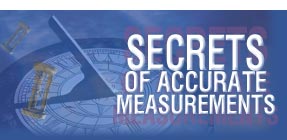 |
 |
 |
| RU |
|
Login
Newsletters
There is no newsletter category found. Information
|
Rohde & Schwarz high-end signal generator performs closed-loop tests in realtime on LTE base station receivers 04/19/2010 The R&S SMU200A high-end vector signal generator from Rohde & Schwarz now has an option that supports realtime processing of feedback information in LTE base station receiver tests. Equipped with the R&S SMU-K69 option, the signal generator processes HARQ feedback as well as uplink timing adjustment commands from the base station, and then adapts the LTE signal dynamically in line with the 3GPP TS 36.141 test specification. These tests previously required special test user equipment (UE) and fading simulators. Rohde & Schwarz now offers a unique one-box solution to replace complex test setups – the R&S SMU200A combines RF signal generation and fading simulation with realtime feedback processing capability all in a single instrument.
The 3GPP TS 36.141 conformance test specification defines a range of demanding closed-loop performance tests to characterize the performance of LTE base station receivers. A base station must be able to dynamically check the transmission of channel-coded data packets. This means that during testing, a signal generator not only needs to send RF signals with the correct channel coding in compliance with the LTE standard, but must also be able to respond to the feedback information from the base station. With the new R&S SMU-K69 option (closed-loop BS test), the R&S SMU200A high-end signal generator now supports realtime processing of hybrid automatic repeat request (HARQ) feedback information and uplink timing adjustment commands.
Using the HARQ function, a base station signals to a mobile phone whether it received a data packet correctly or incorrectly. If transmission was impaired, for example by fading, the base station requests retransmission of the packet with modified channel coding. The R&S SMU200A behaves in a way that is analogous to the HARQ processes of real user equipment. The signal generator can also be installed with options that introduce fading and additive white Gaussian noise (AWGN) to simulate transmission conditions as stipulated by the test specification. This makes it possible to verify the base station’s response to the received data packets with respect to the standard, using a single instrument.
A base station uses uplink timing adjustment to adapt the timing of all transmitting mobile phones in order to prevent overlapping transmissions. Due to the R&S SMU200A’s dual-path architecture, even the demanding uplink timing adjustment test can be performed with a single unit: The signal generator simulates a stationary UE on one path and a moving UE on the other. The moving UE can transmit with or without a time offset relative to the stationary UE.
The R&S SMU200A features excellent RF performance that in many cases surpasses that of test UE. This provides base station developers with more accurate and reliable results. The signal generator can also be used for many other base station LTE receiver tests specified by the standard, and therefore minimizes test setup complexity.
The R&S SMU-K69 LTE closed-loop BS test option for the R&S SMU200A high-end vector signal generator is now available from Rohde & Schwarz. An LTE closed loop BS test option (R&S AMU-K69) is also available for the R&S AMU200A baseband signal generator and fading simulator.
Rohde & Schwarz www.rohde-schwarz.com Company profile: Rohde & Schwarz Related Information:
Companies' news
KIPiS articles
|
Current issue
Search
|
|
|
| © "Test & Measuring Instruments and Systems" ("KIPiS"), 2000-2024 |

























